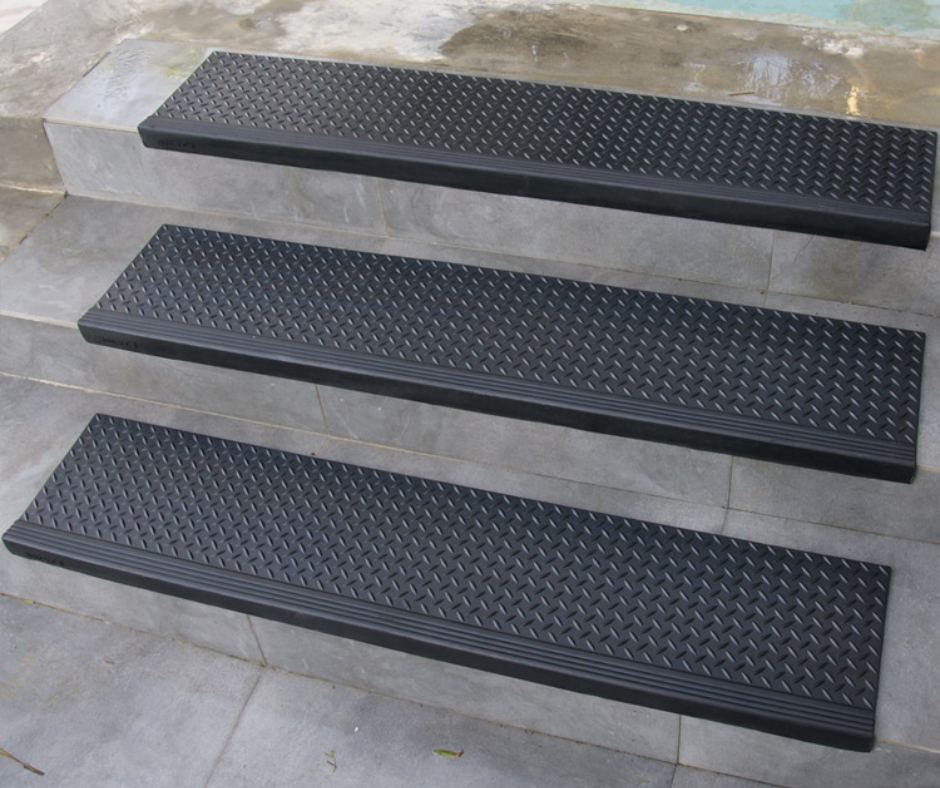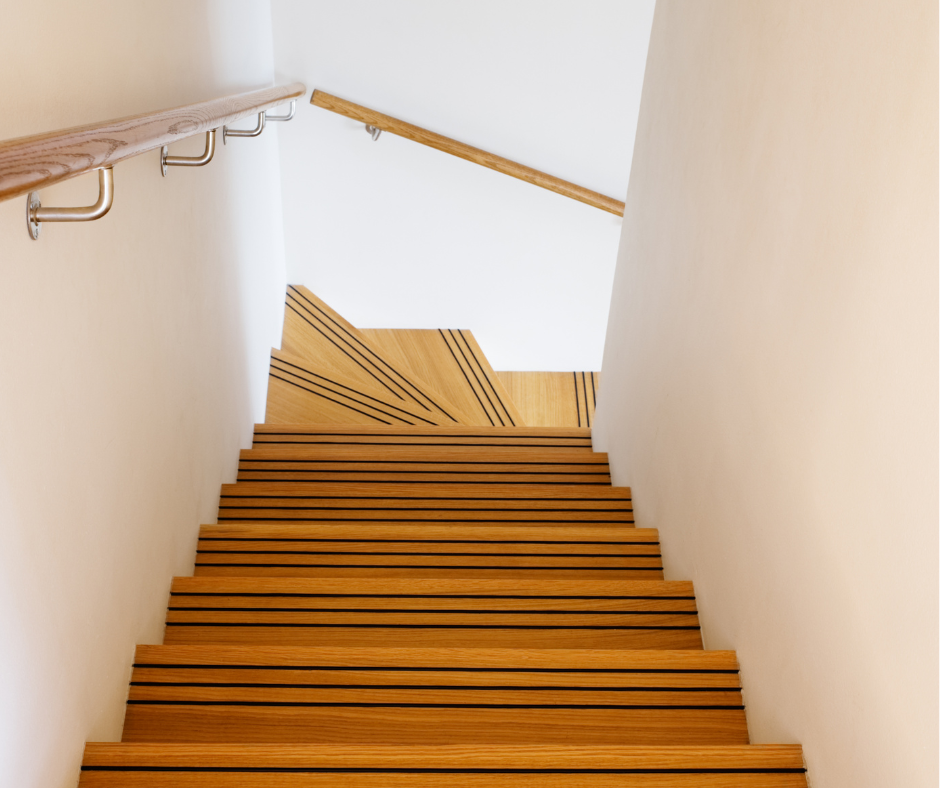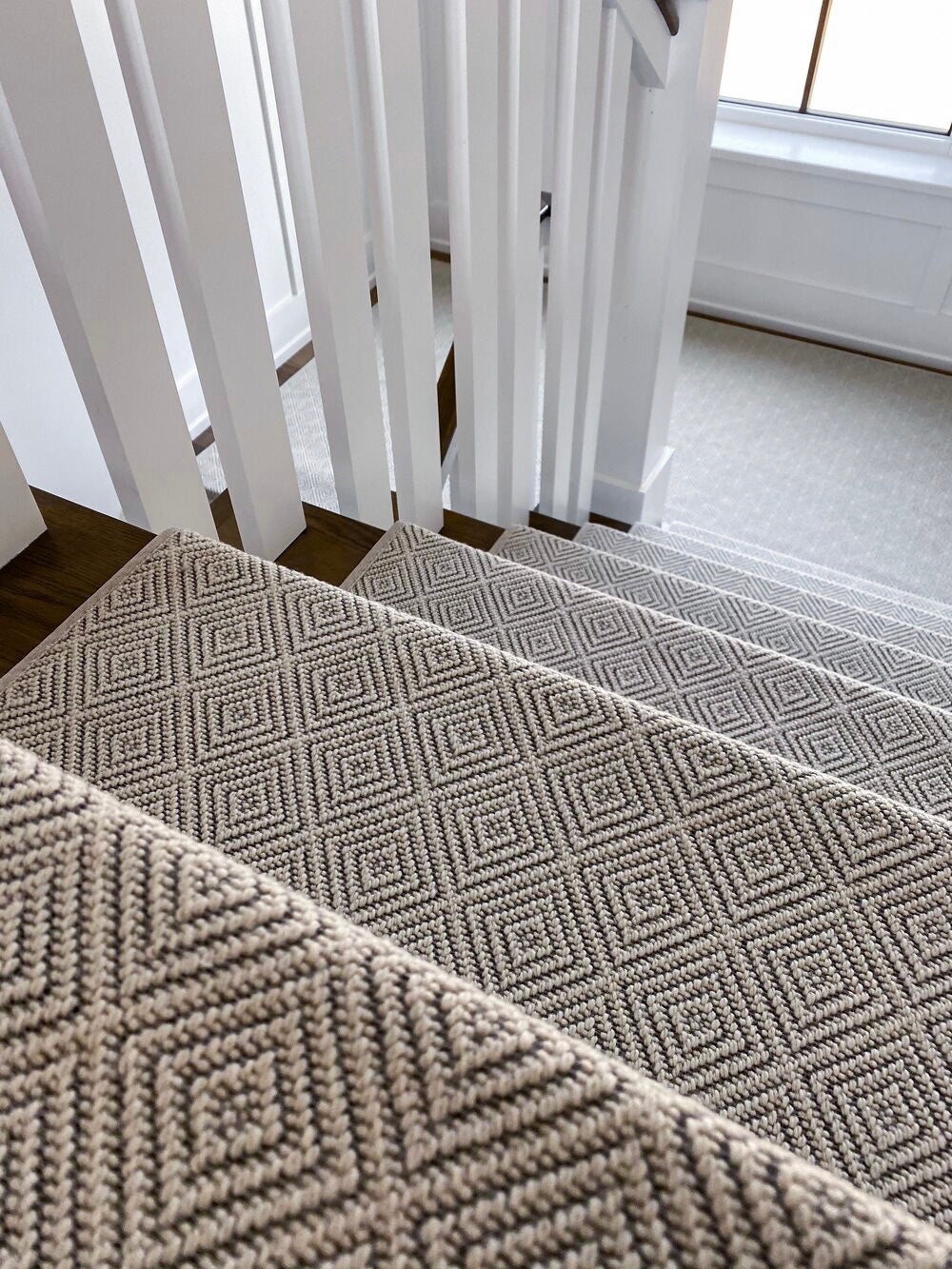A well-designed staircase starts with accurate measurements, ensuring safety, comfort, and functionality.
To measure stair tread depth, extend a tape measure from the front edge of the tread to where it meets the riser, keeping it flat for accuracy.
This precise measurement is essential for verifying uniformity, preventing tripping hazards, and choosing the right carpet stair treads for added safety and style.
Beyond basic measurements, factors like riser height, nosing overhang, and building code compliance play a key role in staircase design.
This guide covers how to measure stair tread depth correctly, explores standard measurements for stair treads and risers, and provides expert tips for enhanced safety.
Whether you're renovating or installing new stairs, understanding these details ensures a secure and visually appealing staircase.
Why Proper Stair Tread Measurement Matters
Accurate stair tread measurements are crucial for several reasons:
-
Safety: Properly measured treads reduce tripping hazards and ensure a comfortable walking surface.
-
Compliance: Many local building codes require specific stair dimensions to meet safety regulations.
-
Comfort: A well-proportioned staircase allows for smooth movement without strain.
-
Aesthetic Appeal: Uniform steps contribute to a visually balanced and elegant staircase.
The Role of Stair Treads in Safety and Comfort
A staircase should feel natural and easy to navigate.
If a stair tread is too shallow, people may struggle to place their feet securely, increasing the risk of falls.
Conversely, if the treads are too deep, it may be difficult to maintain a steady rhythm while walking up or down.
How to Measure Stair Tread Depth Accurately
To measure stair tread depth correctly:
-
Use a Tape Measure: Extend the tape from the front edge of the tread to the point where it meets the riser.
-
Ensure Accuracy: Keep the tape flat and level to get a precise measurement.
-
Verify Uniformity: Check each tread to confirm consistent depth, preventing missteps or uneven stairs.
This measurement is especially important when deciding what size carpet stair treads to install on your staircase.
Properly sized treads ensure a seamless fit, maximizing both function and style.
How to Measure Stair Steps for Consistency
Accurate stair measurements ensure a uniform and safe staircase.
Here’s how to measure each component correctly:
1. Measuring Tread Depth
-
Place a straight edge or ruler along the tread.
-
Measure horizontally from the front edge (nosing) to where the tread meets the riser.
-
Record the measurement and repeat for each step.
2. Measuring Riser Height
-
Position the tape measure at the top of one tread and extend it vertically to the top of the next tread.
-
Ensure all risers have consistent heights to prevent tripping hazards.
3. Checking for Variations
-
Walk up and down the staircase to feel for inconsistencies.
-
Small differences in measurements can create discomfort and safety concerns.
-
Adjust as needed before finalizing stair installation.
Standard Measurements for Stair Treads and Risers
Building codes often dictate the standard measurements for stair treads and risers to maintain safety and accessibility.
-
Tread Depth: Residential stair treads are typically 10 to 11 inches deep, providing enough space for an adult foot.
-
Riser Height: Standard riser height ranges from 7 to 8 inches, allowing for easy movement.
-
Nosing Overhang: Most stair designs include a nosing overhang of ¾ to 1¼ inches for added grip and comfort.
Using these measurements ensures that stairs meet safety requirements and provide a comfortable walking experience.
What is the 7-Eleven Rule for Stairs?
The 7-Eleven rule is a simple guideline for stair design:
-
7-inch riser height
-
11-inch tread depth
This combination creates stairs that feel natural and comfortable to climb while reducing strain on the legs.
Many builders follow this rule to ensure optimal stair usability.
What is the Most Comfortable Stair Tread Depth?
The ideal stair tread depth depends on several factors, including:
-
User Demographics: Elderly individuals or young children may require deeper treads for added stability.
-
Usage Frequency: High-traffic areas benefit from slightly deeper treads for comfort.
-
Aesthetic Preferences: Modern staircase designs often feature deeper treads for a sleek, luxurious appearance.
For most homes, 11 inches is considered the most comfortable depth, as it allows an entire foot to rest on the tread without overreaching.
Additional Considerations for Accurate Measurement
Beyond basic measurements, consider these additional factors:
1. Using Reliable Tools
-
A high-quality tape measure ensures accuracy.
-
A carpenter’s square helps measure straight angles.
2. Factoring in Environmental Conditions
-
Indoor stairs: Typically have uniform risers and treads for comfort.
-
Outdoor stairs: May require deeper treads due to weather exposure and wear.
3. Accounting for User Needs
-
Families with small children: Consider lower risers for easy climbing.
-
Senior-friendly homes: Deeper treads and non-slip surfaces improve safety.
Enhancing Stair Safety Through Design
Once your stair measurements are confirmed, incorporating design elements can further enhance safety and functionality.
1. Improving Visibility with Contrast
-
Using contrasting colors on stair nosing improves visibility.
-
Dark treads with light risers help define each step.
2. Implementing Non-Slip Solutions
-
Apply anti-slip tape or grip paint to prevent falls.
-
Use high-quality carpet stair treads for added traction.
3. Enhancing Lighting for Safety
-
Install LED strip lighting along stair edges.
-
Use motion-sensor lights for nighttime visibility.
Common Stair Measurement Mistakes to Avoid
Even minor errors can affect stair safety and functionality. Avoid these common mistakes:
1. Incorrect Tape Measure Placement
-
Always position the tape flat against the tread for accurate depth readings.
2. Ignoring Building Codes
-
Failing to adhere to standard measurements for stair treads and risers can result in unsafe stairs.
3. Overlooking Tread Uniformity
-
Even small variations in tread depth can cause missteps and accidents.
DIY vs. Professional Stair Measurement
Should you measure stair treads yourself or hire a professional?
DIY Measurement
-
Ideal for simple home projects
-
Cost-effective
-
Requires basic tools
Professional Measurement
-
Ensures code compliance
-
Recommended for custom staircases
-
Best for large-scale renovations
If you’re installing custom carpet stair treads, professional measurement ensures a perfect fit.
Steps To Success
Measuring stair tread depth correctly is essential for creating safe, functional, and visually appealing stairs.
Following best practices, such as using proper tools, considering safety guidelines, and incorporating design enhancements, ensures a comfortable staircase that meets both safety and aesthetic needs.
For high-quality carpet stair treads that combine style and safety, explore Oak Valley Designs' selection.
Contact Us Today!
-
Website: https://oakvalleydesigns.com/
-
Phone: 706.331.0315
-
Email: info@oakvalleydesigns.com
-
Address: 30 River Ct SW Bldg E Cartersville, Ga 30120




